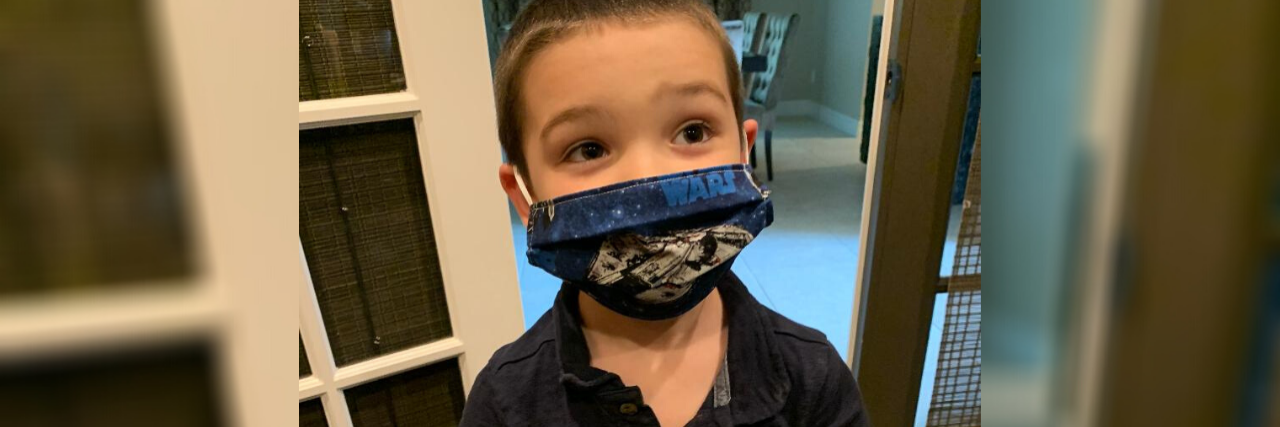Helping a Child With Autism Tolerate Wearing a Face Mask
Editor's Note
Join The Mighty’s Coronavirus group to connect with other Mighties living through the pandemic. Read the latest updates, share helpful tips, or give and receive virtual support.
As a result of the current, highly contagious COVID-19 pandemic, the practice of wearing a face mask in public is becoming more common. Not only have health officials recommended face masks to reduce the spread of the virus, many public places now require it.
However, for children on the autism spectrum, this can be a problem. Some children with autism may experience sensory aversions to having their faces covered or dislike the feeling of elastic around their sensitive ears. Others may not adapt well to disruptions in their typical routines. Wearing a face mask may cause frustration, which may lead to meltdowns or aggressive behavior. But the fact is, wearing face masks is becoming a new norm and we must all learn to adapt.
My 5-year-old son has autism spectrum disorder. Since the pandemic outbreak, we have not taken him anywhere that requires a face mask. But at some point that will change and I need him to be able to wear one. I recently ordered him a mask made out of Star Wars fabric with the Millenium Falcon right in the center. He loves Star Wars, and the day it arrived, he was eager to try it on. He proudly stated, “It’s my Star Wars doctor mask!” Despite his excitement, seconds later, the mask lay crumpled on the floor. I knew I’d need help, so I turned to the experts, his behavioral therapy team.
Within days they created a detailed “Wearing a Mask” program for him. The goal is to have him tolerate wearing the mask covering his mouth and nose for an extended time without touching it and without engaging in maladaptive behaviors, which are behaviors used to avoid something such as taking it off or becoming aggressive.
Wearing Masks Program PDF (Click to download)
- Let child know that you’ll be wearing masks for the next couple of activities.
- Present option to read/watch social story video
- If needed, utilize Premack principle to gain motivation for wearing mask (First _____, Then ____)
- Put on masks (if needed, help child using least to most prompting), start timer.
- Look in the mirror to show child how the masks look on both of you
- Transition to an activity
- Complete time criteria
- When time is up, transition from activity and go inside to take off masks and wash hands.
The first time criteria is meeting the 30-second mark six times without touching the mask. Then the time gradually increases to one minute, three minutes, six minutes, 10 minutes, and finally, 20 minutes. During the trials, if he attempts to touch it or take it off or engages in maladaptive behavior, the therapist will redirect and show him how much time is left on the timer so he knows how much longer he must wear it. The program is comprehensive, systematic, and involves data collection to monitor his progress.
So far, he has been progressing well with the program. I send his Star Wars mask in his Star Wars lunchbox each day, and the therapist says he gets excited when he sees it. I am confident that with the help of his excellent behavior team, he will soon be happily wearing his mask, and when the world opens back up, we will be ready!
For more on the coronavirus, check out the following stories from our autism community:
- I’m Autistic and This CDC Equation Says My Life Is Less Valuable If I Get COVID-19
- One Reason the COVID-19 Pandemic Might Be Extra Challenging for Autistic Adults
- What to Do When Your Child on the Autism Spectrum’s Routine Is Disrupted by the Coronavirus
- 5 Reasons to Try Telehealth Services for Your Autistic Child During the COVID-19 Pandemic

